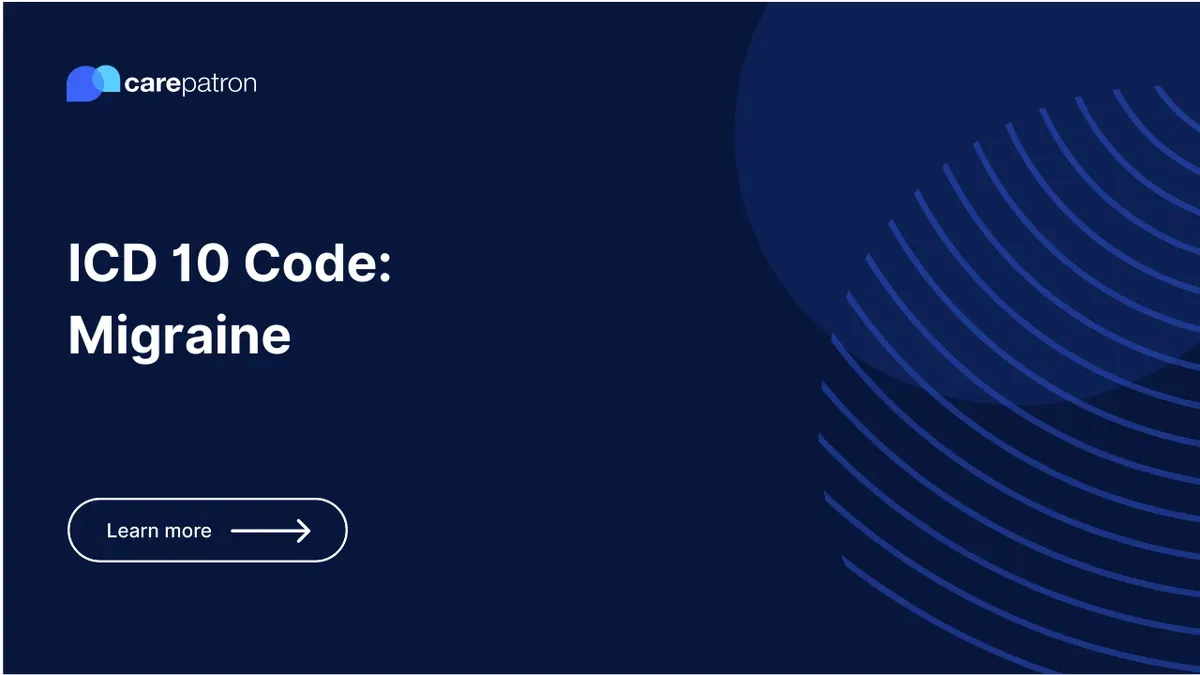
Migraine ICD-10-CM Codes | 2023
Learn about common migraine ICD-10 codes, their clinical descriptions, billability, and more.
Use Code
Commonly asked questions
You should use a Migraine ICD code when diagnosing a patient with a type of migraine. The specific code you use will depend on the exact type of migraine, its severity, its resistance to treatment, and other factors.
Yes, Migraine diagnoses are typically billable. This means that they can be used for reimbursement purposes. However, coverage and reimbursement specifics can vary among different insurance providers.
Common migraine treatments can include medication (both to prevent attacks and alleviate symptoms during an attack), lifestyle modifications (like managing stress and avoiding triggers), and in some cases, even physical therapy or surgery. The specific treatment will depend on the patient's circumstances and the type of migraine.
EHR and practice management software
Get started for free
*No credit card required
Free
$0/usd
Unlimited clients
Telehealth
1GB of storage
Client portal text
Automated billing and online payments
